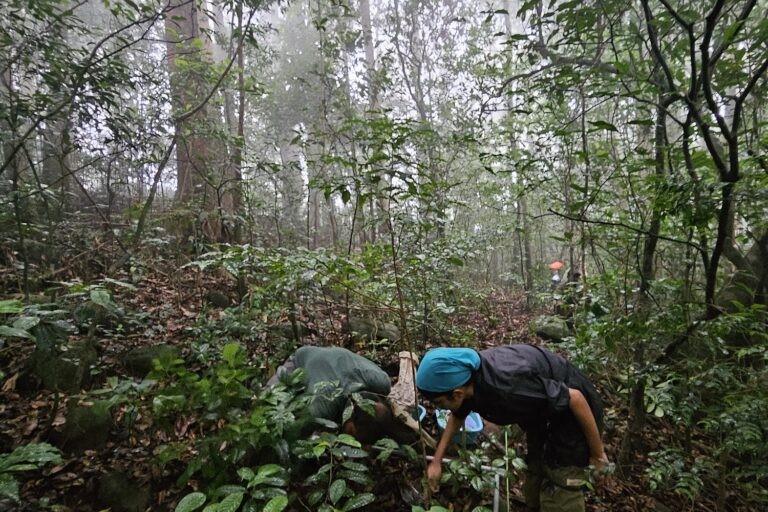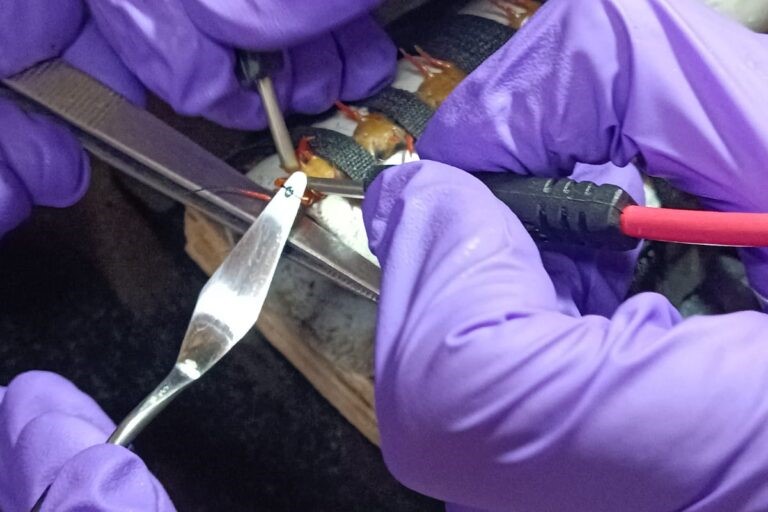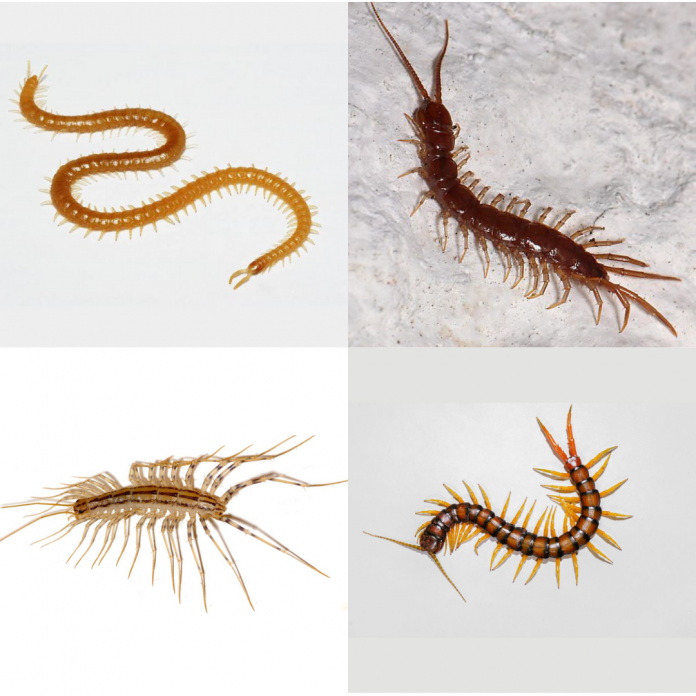Major types of centipedes are found in India. From top to bottom, left to right: Centipedes of Order Geophilomorpha or the soil centipedes (Photo by Peter Koomen Taxon Expeditions), Lithobiomorpha or the rock centipedes (Photo from BugGuide.net), Scutigeromorpha or the house centipedes (Photo from Wikimedia Commons) and Scolopendromorpha or the tropical centipedes (Photo from Jahnavi Joshi research group at the Centre for Cellular and Molecular Biology, Hyderabad).
- Centipedes, among other arthropods, have high genetic diversity. Organisms with a higher genetic diversity are often the ones that have evolved into a greater number of species.
- A research group studying centipedes found in the wild in India focuses on understanding ecology and evolution through these invertebrates.
- Such research, that studies evolution in the wild and in the context of its real niche, goes beyond the conventional metrics of studying evolution, which are largely restricted to morphological adaptations of organisms, writes the author of this commentary.
The monsoons have arrived at the Western Ghats. The PhD scholars and researchers from Jahnavi Joshi’s group at the Centre for Cellular and Molecular Biology, Hyderabad are in Kerala. They are getting ready to hike in the forests of the Agasthhyamalai Biosphere Reserve at Peppara Wildlife Sanctuary. Carrying ropes, rakes, shovels, forceps, sacks and bags, tubes and jars with them, they are on the lookout for the multi-legged centipedes.
Joshi leads the only research group in India that studies centipedes. And they stand out in the community for two reasons. One, most research groups that study centipedes focus on their taxonomy – naming, describing and classifying the different members of the family. Joshi’s group takes this work ahead. They use centipedes to understand the rules of ecology and evolution. The second reason they stand out is that most evolutionary biologists in India study either lab-bred model organisms or use wild vertebrates as models to address questions in evolution. Joshi’s group, on the other hand, studies invertebrates like centipedes and millipedes found in the wild that have evolved for millions of years, many of which are older than the vertebrates and are considered living fossils.
Centipedes have been around on Earth for about 400 million years and come in different sizes. Some are smaller than half a centimetre and some grow up to 30 cm. However it is rather difficult to morphologically identify the species differences in centipedes. Joshi’s group is on a mission to document the different ways the centipedes have evolved. They want to further understand what drove the evolution of different aspects of centipedes such as their body size, the geographies where they have lived, when they reached those habitats in the evolutionary time scale, the food they eat, and so on.
In a recent global study, Joshi’s group found that centipedes, among other arthropods (organisms with jointed feet), have higher genetic diversity. Organisms with a higher genetic diversity are often the ones that have evolved into a greater number of species. They argue it is possible because of their long evolutionary history, low dispersal ability and thus more isolated populations. They compared existing literature on different centipede species found across the world and studied their genetic diversity. They found those with smaller body sizes and with more maternal care for the offspring, show higher genetic diversity. The study also found that centipedes in the southern hemisphere overall show higher genetic diversity, perhaps due to low seasonality and a more stable climate historically.
This is a good reason for them to study the centipedes found in the Ghats of India and establish a novel model system to study evolution.
Trained to identify their species from their body plan and colour, their head position, antennae, and structure of the last pair of legs, the researchers spend hours walking in the forest. Turning the rocks and leaves, in shaded and moist areas, away from flooded regions, they search for groups of centipedes. Post-rains, these crawlies come out of their soil burrows. Sharing the ecosystem with snakes, lizards, skinks caecilians, scorpions, spiders, earthworms and insects among others, centipedes are venomous organisms and are the top predators in soil ecosystems. They are called the tigers of the soil and their presence could drive the evolution of other organisms in their neighbourhood.
When the researchers find a centipede, they collect them with forceps in boxes to bring back to their lab in Hyderabad. In addition, they also bring samples of other arthropods present in the same ecosystem. They choose plots at regular intervals in the area where they find centipedes. They pick the litter from the plots, collect them in a sack and sift out a mix of many kinds of invertebrates into a jar leaving behind the leaf litter in the sack. They take the mega-fauna pool to their lab and extract DNA from them.

In the lab, the researchers determine the identity of the centipede species by integrating traditional taxonomy (study of the morphological details) and molecular techniques (by extracting DNA from them and using molecular markers). Similarly, they use molecular markers to identify the organisms from the mega-fauna pool of DNA. They also cut open the gut of centipedes, isolate DNA from there and identify the different organisms whose DNA is present in the centipede gut. Together, they arrive at a list of potential prey of centipedes, vulnerable to their venoms. In addition, during their fieldwork, Joshi’s group also observed centipedes feeding on small mammals such as bats, small reptiles and arthropods. They believe that centipede species feed on a wide variety of life forms.
To deep dive into feeding habits, Joshi’s group studies the venom profile of centipedes. They extract venom from the glands and study its components. Using transcriptomic and proteomic tools, they establish the composition of venoms. They have found that centipede venoms are complex cocktails, comprising many protein and peptide families and also many enzymes.
And there is an enormous diversity in venoms across families of centipedes. Why and how their venoms have changed so much and how that is linked to the evolution of other organisms around them, form the central theme of Joshi’s research questions.

To address these questions, the group studies centipedes not just from Kerala, but from different parts of Western and Eastern Ghats. Owing to the shared evolutionary past of the forests in these regions, they offer the researchers centipedes whose ancestors were once together but eventually were separated because of the changing landmass and climate in the Indian peninsula across the geological timescale. As a result, over time, their ecosystems, diets and venoms changed.
By comparing these understudied characteristics of centipedes, the Joshi group is building a library of centipede body sizes, habitats, diet, venom compositions, and evolutionary ages of the different species. These studies are going beyond the conventional metrics of studying evolution, which are largely restricted to morphological adaptations of organisms. This is the beginning of researchers studying evolution in the wild, in the context of its real niche and studying evolution from multiple perspectives.
The author leads science communication and public outreach at CSIR – Centre for Cellular and Molecular Biology, Hyderabad.
This article was originally published on Mongabay-India.


